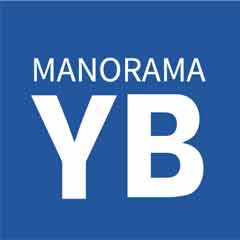Gujarat hosts global summit on traditional medicine

Mail This Article
A global summit on traditional medicine organised by the World Health Organisation (WHO) will focus on the role of age-old medical practices in addressing health challenges and driving progress in sustainable development.
It is being held alongside the health ministerial meeting of G20 in Gandhinagar from August 17 to 18. The first-of-its-kind summit is co-hosted by the Union Ministry of AYUSH.
The WHO summit will focus on the role of traditional medicine in addressing health challenges and driving progress in sustainable development.
More than 350 representatives from over 90 countries and 200 delegates from India will attend the summit, where health ministers of 12 countries other than those from the G20 will also be present.
A declaration at the end of the two-day summit will set the direction for the Jamnagar-based Global Centre for Traditional Medicine (GCTM).
Traditional medicine
• Traditional medicine has a long history. It is the sum total of the knowledge, skill, and practices based on the theories, beliefs, and experiences indigenous to different cultures, whether explicable or not, used in the maintenance of health as well as in the prevention, diagnosis, improvement or treatment of physical and mental illness.
• Its reach encompasses ancient practices such as acupuncture, ayurvedic medicine and herbal mixtures as well as modern medicines.
• The terms “complementary medicine” or “alternative medicine” refer to a broad set of health care practices that are not part of that country’s own tradition or conventional medicine and are not fully integrated into the dominant health care system. They are used interchangeably with traditional medicine in some countries.
• Traditional and complementary medicine (T&CM) is an important and often underestimated health resource with many applications, especially in the prevention and management of lifestyle-related chronic diseases, and in meeting the health needs of ageing populations.
• Around 80 per cent of the world’s population is estimated to use traditional medicine. As many as 170 of the 194 WHO Member States have reported the use of traditional medicine, and their governments have asked for WHO’s support in creating a body of reliable evidence and data on traditional medicine practices and products.
• The sociocultural practice and biodiversity heritages of traditional medicine are invaluable resources to evolve inclusive, diverse sustainable development.
• Traditional medicine is also part of the growing trillion-dollar global health, wellness, beauty, and pharmaceutical industries.
• The term traditional medicine describes the total sum of the knowledge, skills and practices indigenous and different cultures have used over time to maintain health and prevent, diagnose and treat physical and mental illness. Its reach encompasses ancient practices such as acupuncture, ayurvedic medicine and herbal mixtures as well as modern medicines.
• Traditional medicine is increasingly prominent in the world of modern science.
• Some 40 per cent of approved pharmaceutical products in use today derive from natural substances, highlighting the vital importance of conserving biodiversity and sustainability. For example, the discovery of aspirin drew on traditional medicine formulations using the bark of the willow tree, the contraceptive pill was developed from the roots of wild yam plants and child cancer treatments have been based on the rosy periwinkle. Nobel-prize winning research on artemisinin for malaria control started with a review of ancient Chinese medicine texts.
• There has been a rapid modernisation of the ways traditional medicine is being studied. Artificial intelligence is now used to map evidence and trends in traditional medicine and to screen natural products for pharmacokinetic properties. Functional magnetic resonance imaging is used to study brain activity and the relaxation response that is part of some traditional medicine therapies such as meditation and yoga, which are increasingly drawn on for mental health and wellbeing in stressful times.
• In addition, traditional medicine use has also been updated by mobile phone apps, online classes, and other technologies.
• The government of India has established ministry of AYUSH which has a mandate to develop Ayurveda, Yoga, Naturopathy, Unani, Siddha, Sowa-Rigpa and Homoeopathy.
WHO Global Centre for Traditional Medicine
• The WHO Global Centre for Traditional Medicine (WHO GCTM) in Jamnagar is a knowledge centre for traditional medicine.
• Prime Minister Narendra Modi had laid the foundation stone for the centre in presence of WHO Director General Tedros Adhanom Ghebreyesus in April 2022.
• It is the first global outposted centre for traditional medicine across the globe and established under the ministry of AYUSH.
• It will concentrate on building a solid evidence base for policies and standards on traditional medicine practices and products and help countries integrate it as appropriate into their health systems and regulate its quality and safety for optimal and sustainable impact.
The new centre focuses on four main strategic areas:
i) Evidence and learning.
ii) Data and analytics.
iii) Sustainability and equity.
iv) Innovation and technology to optimize the contribution of traditional medicine to global health and sustainable development.




